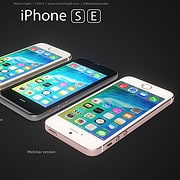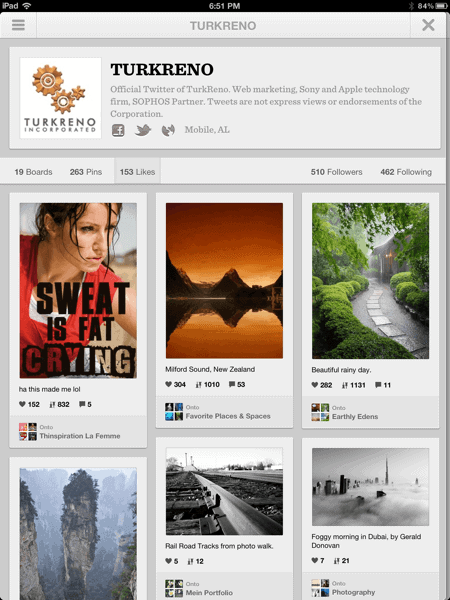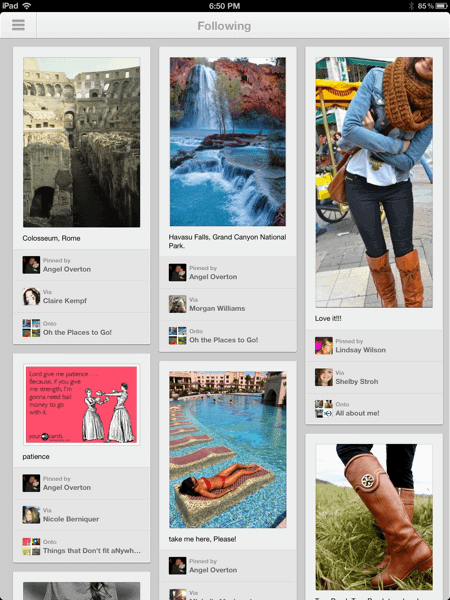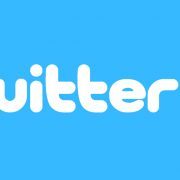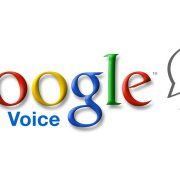Four years ago, if you would have asked me to sign up for Twitter I would have refused, laughed at you and mocked it as the next MySpace. So what was it that stopped us four years ago? Privacy concerns? Not wanting to play into what we thought may be a fad? Refusing to adopt new technology (weird to hear here, I know.)? It’s obvious we’re on Twitter, enjoy ourselves being there and interact with a pretty entertaining number of people and brands. So I’d say it’s probably a mix of all of the above. But we just keep Tweeting!
As I sit here writing this, I have two memories come to mind “before Twitter”. The first is a radio broadcast on NPR, I believe. It was about the growing concern of Internet privacy discussing how we were becoming a culture of over-sharers – letting complete strangers into our innermost thoughts. The broadcast went on talk about Facebook’s polices, how people weren’t able to actually delete their profiles and how the content when shared became a part of Facebook. Then the talk became more centric around a younger audience who were already sharing everything in their lives and already feeling the sting of being fired because of what they posted they did last Friday on Facebook. And how Facebook’s policies were already longer than the constitution. It put me on edge and I joined in with the rest of the people who reacted to the media and committed “Facebook suicide“.
Before you go off the deep end and think that “Facebook suicide” is actual suicide, it’s not. It’s actually the process of completely removing everything that you shared, posted, linked, removing every tag you were tagged in – virtually vanishing and removing your face from Facebook. Since I already had a pretty good feel for Social Media and was seeing Digg and Mixx die, I knew as an advertiser I had to do something to drive traffic and attention to gain business on the Internet. Reddit was a no-go. At the time, I certainly wasn’t inspired to do what I do on Facebook today. Google Wave was horrible. I had no choice; I had to join Twitter. And it was awesome.
The second memory is one that comes from about 2,500 tweets in to participating on Twitter when I was being asked to teach a group how to use and market with social media platform. The same philosophy that I taught then I still have to this day. Be real and engage people. No one sits in a dark room actually expecting people to come to them and be social. You have to go outside, do things that you enjoy and engage others that enjoy those things, too. For me, a lot of my time was spent playing video games or doing introverted things. But I learned some valuable lessons. Talking to people can open doors. And if you don’t know how to converse, it makes it even more difficult. I don’t have any of my notes from my lecture, but several thousand tweets later, following and un-following lots of different types of personalities, the notes have pretty much become embedded.
Twitter still is a confusing platform. The searches people do to find you are all based off of what you say. A human search engine, sort of. I remember people being baffled about hash tags and know some who still are or who will complain about what the top trending topics are. You see, Twitter is contextual and somewhat like Facebook, you start to meet people you have similar interests in. A hashtag in 2008 could connect you with likeminded people pretty quickly and to this day still does. But then there was the even more baffling limit of 140 characters. People began shortening their thoughts, seeing it as a restriction. I saw it as a challenge. What better to do than mix hash tags with a topic that interests you. Conversations were abound and people were sharing what was happening and what they thought instantly. The pressure to share “what’s on your mind” was and is still there, but it, as the broadcast predicted, became easier and easier to do.
I decided to jot down some thoughts that I came to know as truisms for Twitter over the years, hence this post. To some, you may disagree and to others, it may be exactly why you seem to be beating your head against a wall and what you can do about it to soften those hard knocks.
1. Follow Friday is a Twitter tradition. Participate in it. You may have someone you’re following who you’ve seen using the hashtags #FollowFriday and #FF with a list of @ names following. Quite simply, this is how you participate in Follow Friday. My business partner at the time and I came up with a not-so-unique idea since Twitter has evolved called TWIFF (TWItter Follow Friday) that generated a list of your followers in a random order and in no more than 110 to 120 characters a list of automated tweets. In less than 10 minutes every Friday we ran our scripts, tweeted out the entire list of people we followed back and who mutually followed us as well in nice organized tweets. The key was to be random every time since duplicate tweets at the time were frowned upon. Nevertheless, instant Twitter karma, more followers mentioning us, new followers every Friday and it brightened someone’s day every time to be mentioned. Eventually Twitter’s staff got pretty mad and didn’t like the volume of traffic we were creating and suspended us and probably would do the same if you recreated TWIFF. Today, the API restricts us from really going about Follow Friday in a not so annoying way, but at least Twitter has stopped frowning upon “scheduled tweets” or automation. I digress. Follow Friday is a tradition and a way to show your followers that you remember talking to them and want to engage them. So why not tweet more than 120 characters?
2. Try not to tweet using more than 120 characters. In short, you’re taking up room that someone could use to reply and quote you. When we joined Twitter, being mentioned was king. It somehow ranked you higher in their algorithm to be seen the more you were talked about — the more you were engaged. You still can easily spin a topic or subject into a conversation or cut yourself out of one just by re-wording what you said into something shorter. But why not just say what you’re thinking?
3. Don’t share irrelevant information; Be concise and informative. For example, no one wants to read what the weather is like unless they ask. Sure, you may love the sunny day or hate the hurricane you’re living through, but that’s what The Weather Channel is for. Try to talk about something that excites you. And if the weather really does excite you, share it and engage them with it. And preferably with a hashtag so other people who enjoy talking ’bout the weather get to know you. But if you’re a brand or business, how do you share your products and services?
4. No one wants to be sold something on Twitter. Do you remember the last time you went to a car dealership and wanted to have an annoying salesman engage you for the purposes of luring you into his office to buy a brand new vehicle? If you said “Yes” to that, we should have a chat. Soon. No one wants to be haggled, annoyed, told how great one service or good is over and over…and over. It comes across the same way the bastardized idea of a used-car salesman is. Sure you can be excited for a product or brand, and if you follow us you know we have one in mind we love to talk about. The difference is that we use those products or services to engage in a conversation with people we’ve gotten to know over the years. Or maybe we find something that we love at the office, like our Keurig coffee machine. The coffee machine is worth talking about because it’s cool and we like it! The difference is we’re not trying to sell you one. Perhaps we are losing a potential market by not tweeting about what we can do for Web Design or what we’ve done for our clients in the past, but Twitter is a “right here, right now” social media platform. And what about those people who won’t shut up?
5. Chances are the people who won’t stop talking, who are generally annoying or honestly don’t get Twitter have a disproportionate follow-back ratio. People are not engaging them for some reason. If you scroll down their timeline and take a moment to read what they’ve had to say in the past, you may find instantly that you’re not going to enjoy engaging them. One really good reason is because they’re a feed, or rather they have linked their Facebook profile to Twitter thinking they can knock two birds out with one stone. No one wants to read Facebook when they’re on Twitter. Why talk to someone or interact with a brand you don’t like. If you like Deadmau5, it’s probably likely that you’re not going to get along on Twitter with someone who likes to talk about Justin Bieber constantly. Proportion of follow-backs, I said? Yes, I did. Before you hit that follow button, look at how many people someone is following and more importantly, how many people are following that tweeter back. One of the most important things I’ve learned is NOT to follow others on Twitter who are following way more people than are following them back. Easily 9 out of 10 times within a week, I’ll unfollow them. What about celebrities and huge corporate companies?
6. Engage those you find interesting! If I didn’t make my point clear enough, this is the part where it becomes crystal clear. Sure, celebrities may have hundreds of thousands of followers and are only following a few dozen back. Most of them followed the people they’re following back because they are relevant, concise, don’t over share, don’t try to sell them something and have engaged them in conversation — or at least attempted to — on more than one occasion. And most of the time they’ll have a cute little sticker showing they’re “verified” when they’re actually who they say they are. Unlike the account @Apple, which at one point simply had “I like apples” as the only tweet, it’s not actually Apple in Cupertino. Occasionally you’ll engage a celebrity out of dislike, which someone here at the office did, and they responded. Jimmy Kimmel. I don’t find him funny and neither did who tweeted at them. It was one of his very first tweets and apparently it “bruises his balls“, but it got some interesting attention and engagement. Here’s the thing: when a famous personality engages you, the most important thing to do is be yourself. After all, that’s what Twitter is all about.
So I’ll end this with two sites that I’ve found extremely helpful in managing the numbers game of followers on Twitter. The first is a site simply called Friend or Follow. You don’t have to sign up or sign in. Simply type in your username and it will show you who you’re following that’s not following you back. That annoying tweeter who you want to get rid of, I can almost guarantee you he’s probably already un-followed you as Twitter has made it pretty difficult and not so obvious for the average user to know the status of being followed back.
The second site I give high kudos to. It’s called TwitCleaner. You sign in, allow it to scan who you’re following and it will give an analysis of your followers back to you that’s surprisingly brutally honest. The site was created by a New Zealander named Si Dawson. (Just to nail the other point home, he’s following less people than are following him back. Quality usually comes from people who show this proportion.) I’ve yet to find a more accurate tool on Twitter to gauge just how many people you’re following are really just trashing your timeline up. It will tell you if they never engage others, if they are nothing but app abusers, if they have been inactive on Twitter for a period of time and so much more. Invaluable information to someone who is serious about quality and not quantity. Go use it, we promise it’s amazing and tweet that TurkReno sent you for good measure.

